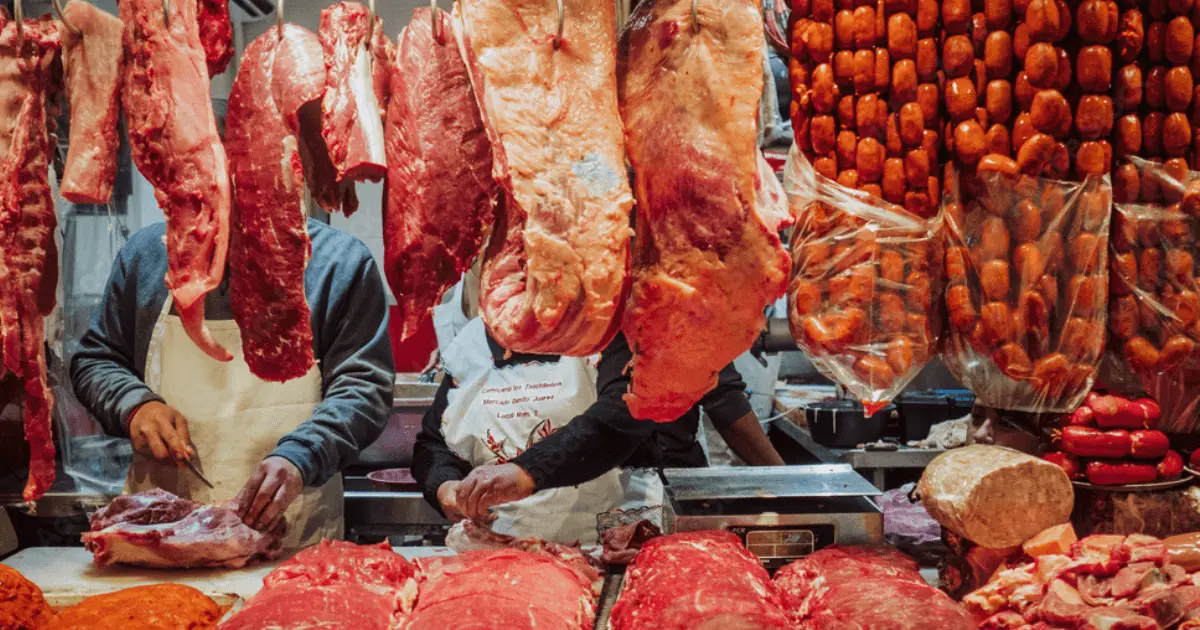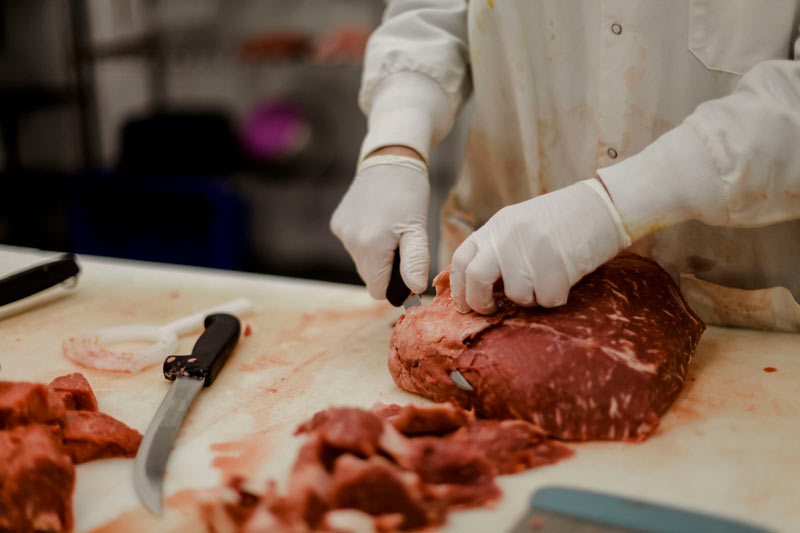Just How to Select the Perfect Cut of Meat From a Trusted Meat Market
Choosing the optimal cut of meat from a trusted meat market requires a thoughtful approach that balances high quality, culinary objective, and budget plan. Understanding the different kinds of meat and their particular cuts is important, as is involving with your butcher to get insights into sourcing and prep work.
Comprehending Meat Cuts


For circumstances, the tenderloin is treasured for its buttery appearance and very little connective cells, making it excellent for quick food preparation methods such as cooking or pan-searing. On the other hand, harder cuts like the brisket or shank gain from slow-moving food preparation strategies to damage down collagen, yielding rich and tasty results.
Additionally, the fat material of a cut plays an important duty in flavor account and wetness retention during food preparation. Cuts with greater fat material, such as ribeye, offer an even more durable flavor, while leaner options, like sirloin, might require cautious preparation to stay clear of dry skin (bagley meat market edwardsville il). Comprehending these nuances permits for educated selections that raise cooking developments, making certain that each recipe showcases the finest qualities of the selected meat
Elements to Take Into Consideration
When selecting the perfect cut of meat, several important variables enter play that can dramatically impact the final recipe. Consider the kind of meat you desire-- beef, pork, lamb, or poultry-- as each deals distinct flavors and appearances. The certain cut within that group is equally vital; for example, ribeye supplies abundant marbling, while tenderloin offers a lean, buttery appearance.
Another element is the food preparation method you plan to utilize. Cuts suitable for grilling, such as T-bones or sirloins, vary from those much better matched for slow food preparation, like chuck roasts or shanks. Furthermore, freshness is extremely important; always select meat with a lively color and company structure, signaling high quality and proper handling.
Additionally, consider the source of the meat. A trusted meat market frequently provides locally sourced, hormone-free, and grass-fed alternatives, which can boost flavor and nutritional worth. Your spending plan will lead your choice. Costs cuts may offer exceptional taste, yet there are additionally cost-efficient choices that, when prepared correctly, can generate tasty results. Balancing these elements will certainly help you select the best cut for your culinary requirements.
Questions to Ask Your Butcher
A butcher's expertise can be very useful when selecting the perfect cut of meat for your culinary useful reference ventures (bagley meat market edwardsville il). To optimize this resource, take into consideration asking in-depth inquiries that can guide your selections. Beginning by asking about the resource of the meat. Comprehending where it originates from can provide insights into its quality and taste account.
Next, ask about the various cuts available for the kind of meat you like. A well-informed butcher will clarify the nuances of each cut, helping you pick one that matches your cooking approach and wanted result. Don't be reluctant to ask concerning the ideal food preparation techniques for a particular cut; butchers commonly have suggestions that can improve your meal.
It's additionally prudent to ask regarding the meat's quality. Inquire about the distribution routine and how often the meat is replenished. This will provide you confidence in the high quality of what you are purchasing. Last but not least, request for referrals based upon your individual preference choices. An excellent butcher will certainly be excited to share their knowledge and recommend cuts that will certainly delight your taste buds. Involving your butcher with these concerns can dramatically improve your meat option experience.
Recognizing Top Quality Meat
Texture is one more crucial element; quality meat ought to really feel firm and a little bouncy to the touch. Stay clear of any type of cuts that really feel slimed or excessively completely dry, as these can show putridity or inappropriate storage space. Furthermore, odor plays a vital duty; fresh meat should have a tidy, neutral fragrance, while any repulsive or sour smells are red flags.
Last but not least, take into consideration the resource. Purchasing from a trustworthy meat market, where the meat's origin is dig this recognized, can ensure greater quality criteria. By concentrating on these indicators-- shade, marbling, texture, odor, and resource-- you can with confidence choose cuts that will boost your cooking and eating experience.
Food Preparation Approaches for Each Cut
Picking the appropriate food preparation approach is paramount for maximizing the taste and tenderness of each cut of meat. Different cuts have unique characteristics that dictate one of the most appropriate food preparation methods.
For tender cuts, such as filet mignon or ribeye, completely dry warmth approaches like cooking, broiling, or pan-searing are ideal. These methods boost the all-natural tastes while guaranteeing a juicy, delicious texture. Conversely, tougher cuts, such as chuck or brisket, take advantage of damp warmth Get More Information techniques, consisting of braising or sluggish cooking. These strategies help break down connective tissues, causing a tender, delicious recipe.
Pork chops and chicken busts are functional and can be prepared utilizing both dry and wet approaches. While cooking or roasting can produce delicious results, poaching or sautéing can keep dampness and tenderness. For lamb, approaches like roasting or braising are recommended, as they enhance the meat's durable taste.

Final Thought
To conclude, selecting the ideal cut of meat from a reputable meat market necessitates an extensive understanding of meat cuts and factor to consider of numerous factors, consisting of resource, quality, and food preparation approaches. Engaging with the butcher through targeted queries can generate important insights and referrals tailored to details cooking demands. Focusing on both quality and budget plan will improve the overall gastronomic experience, making certain that the chosen cut satisfies expectations in both taste and prep work.